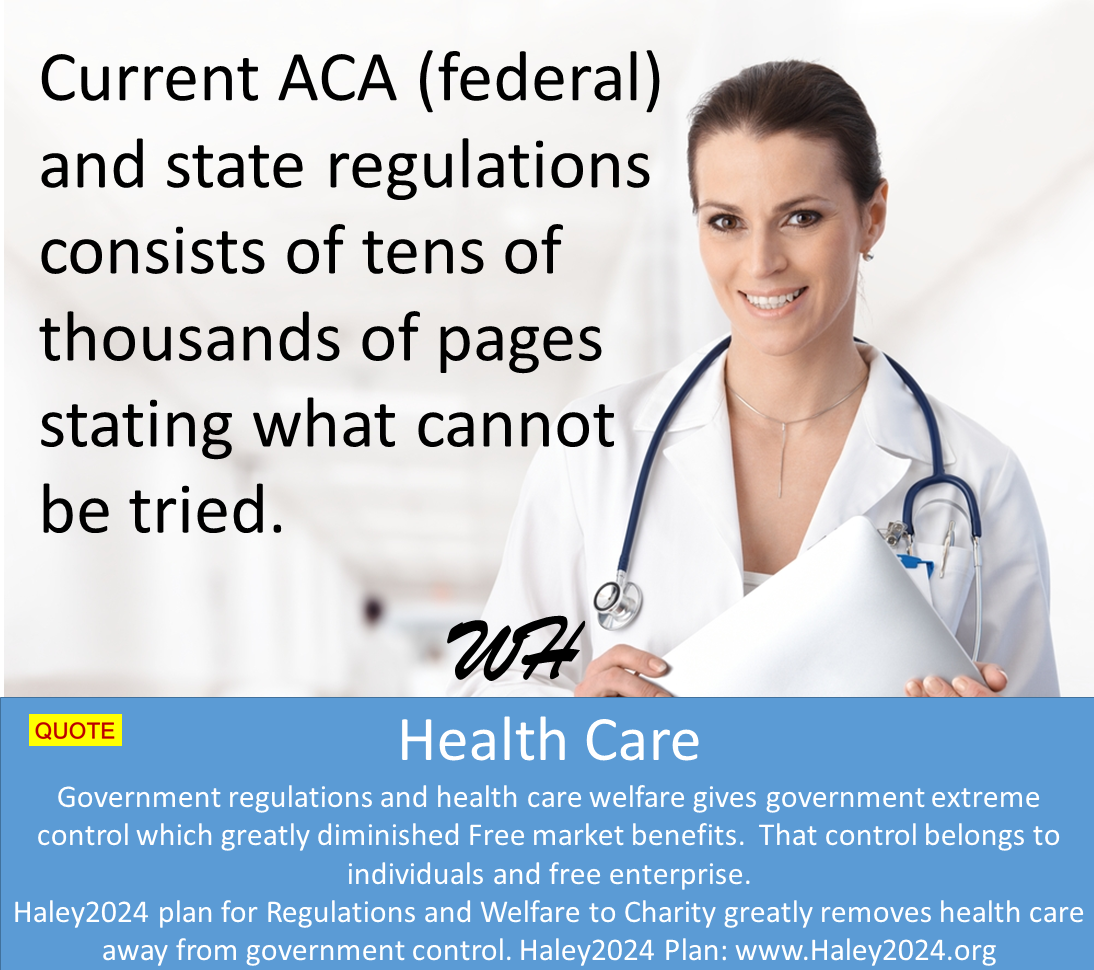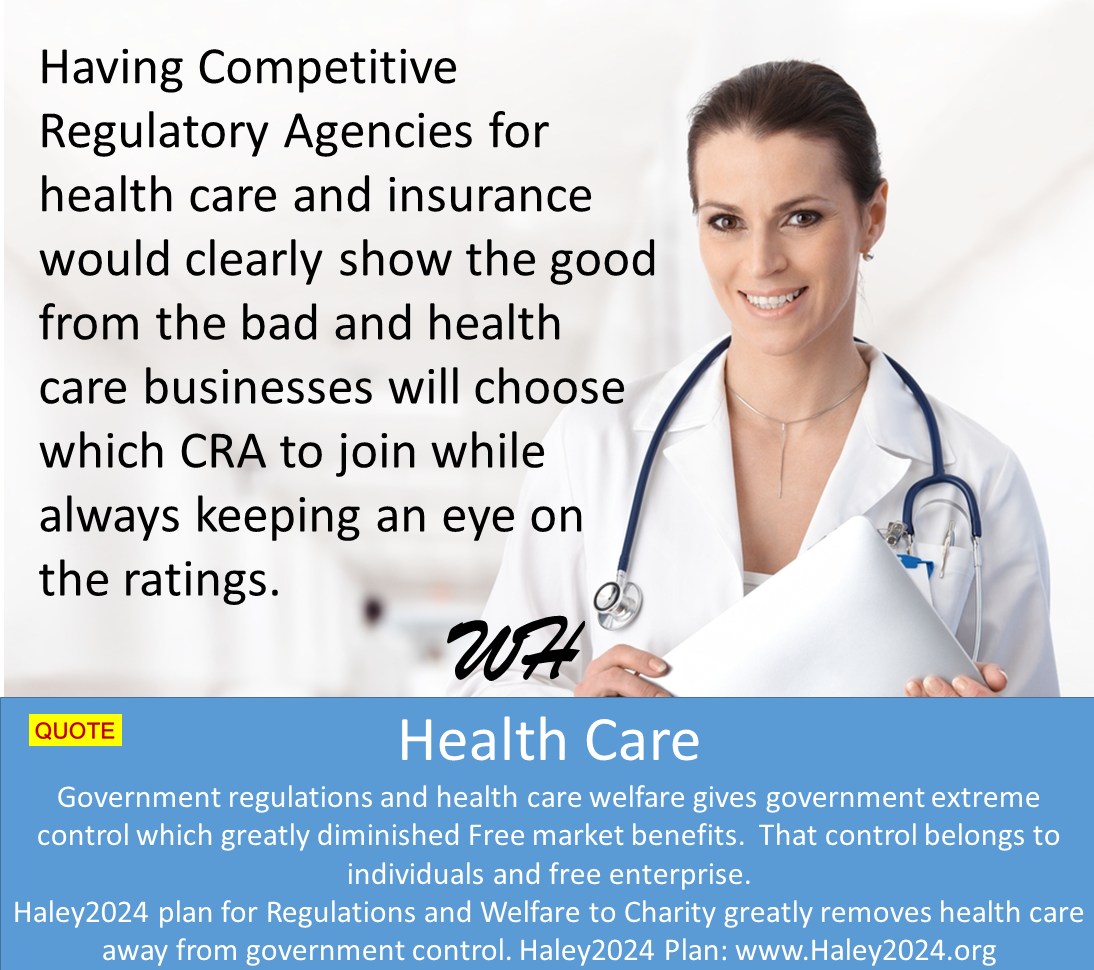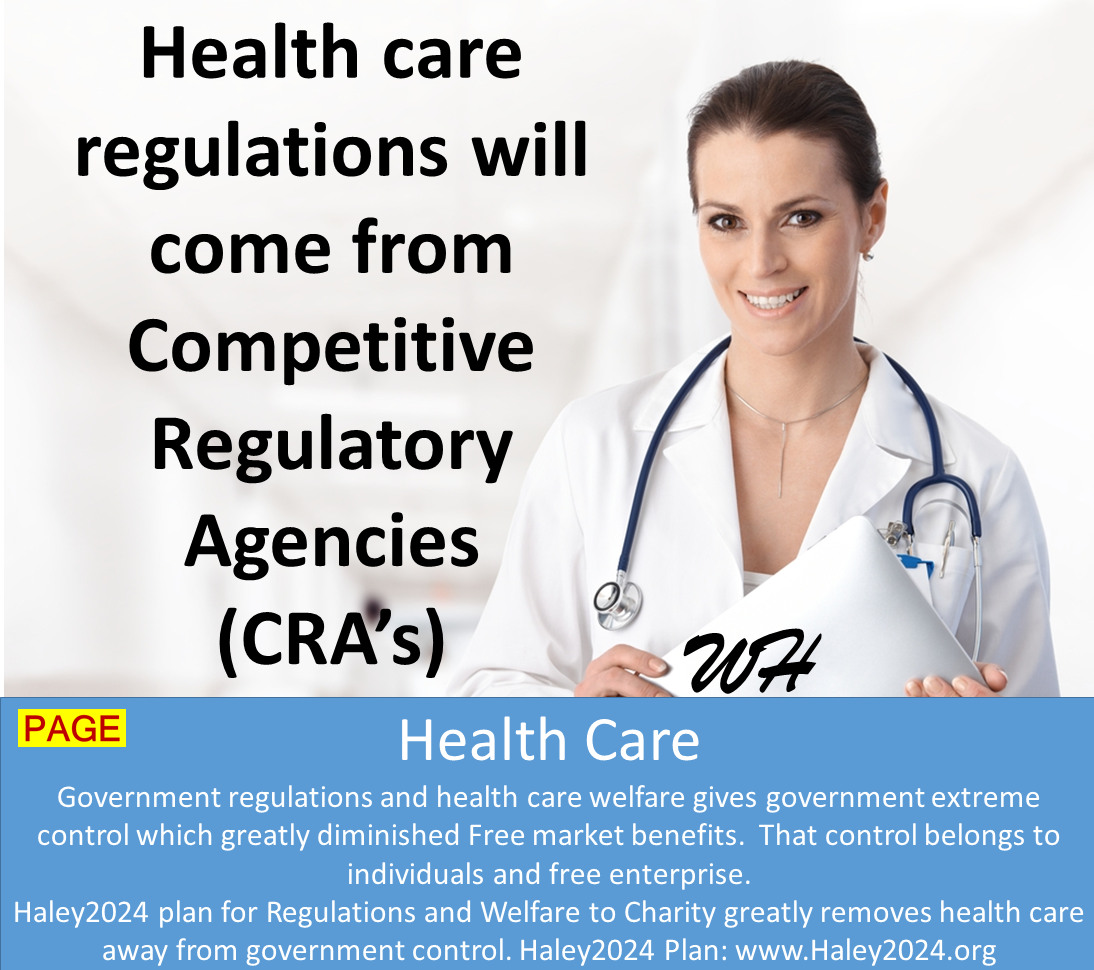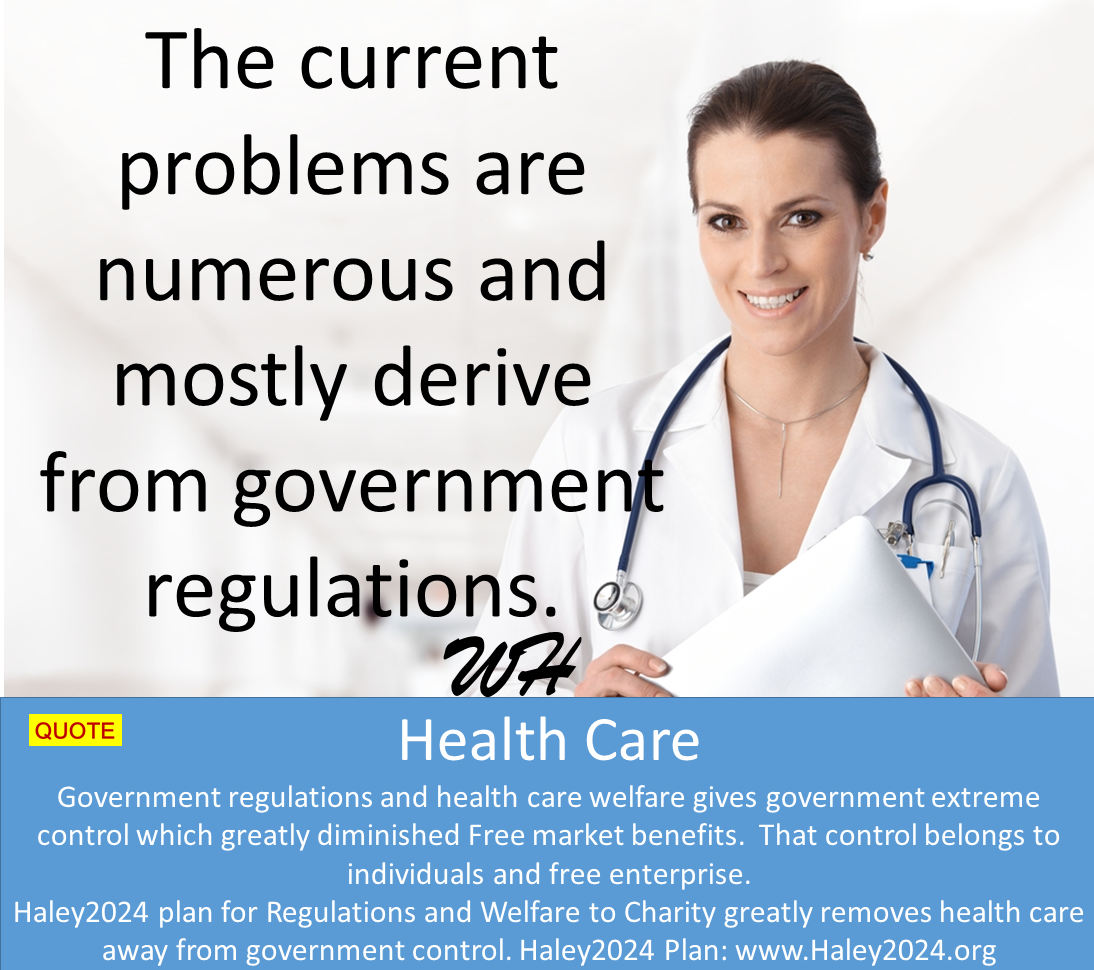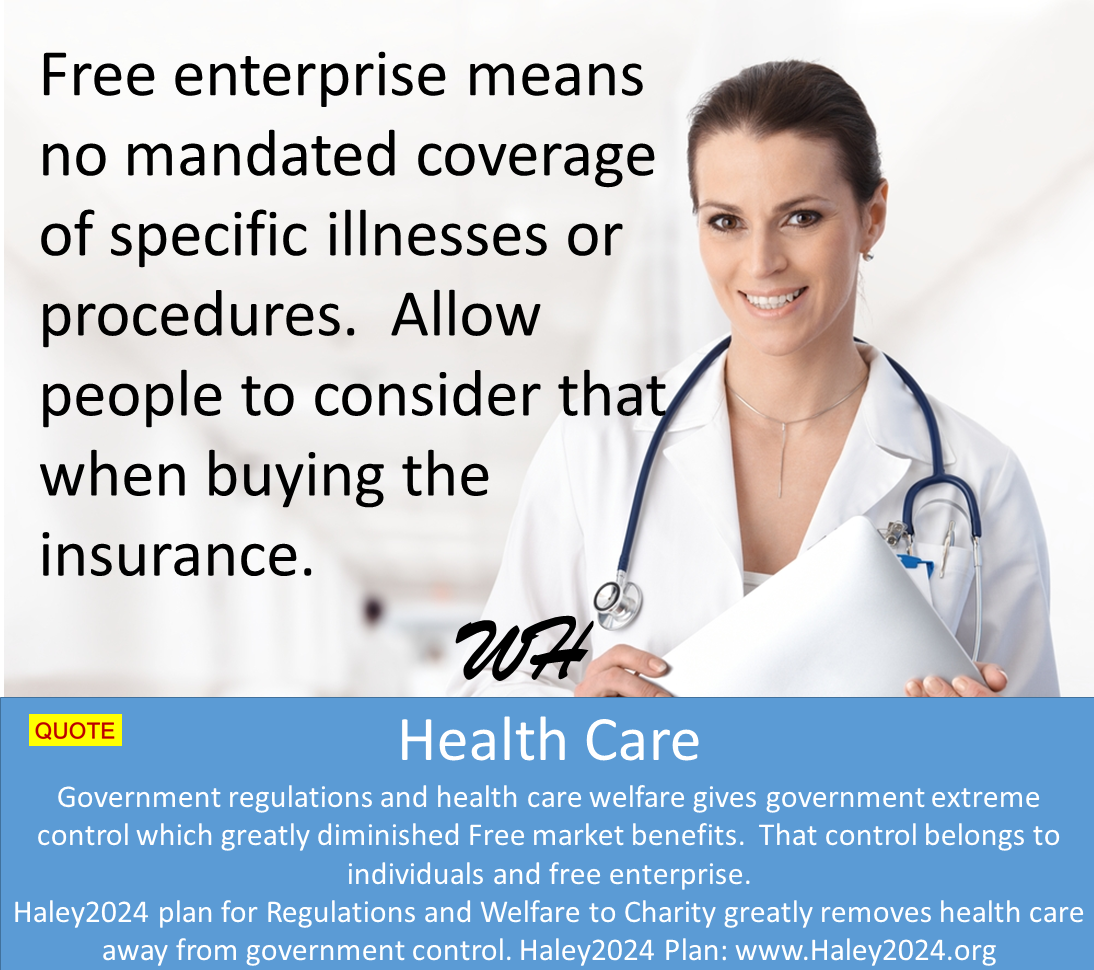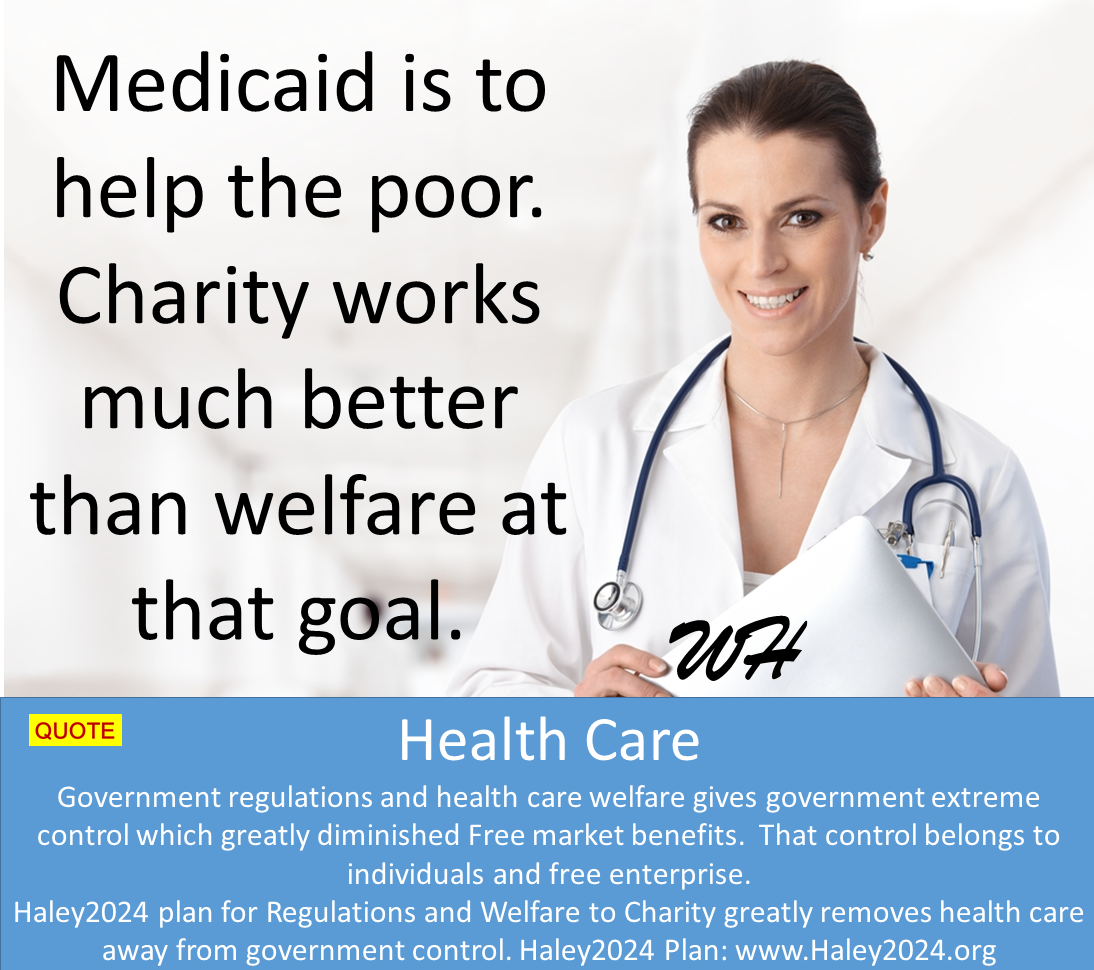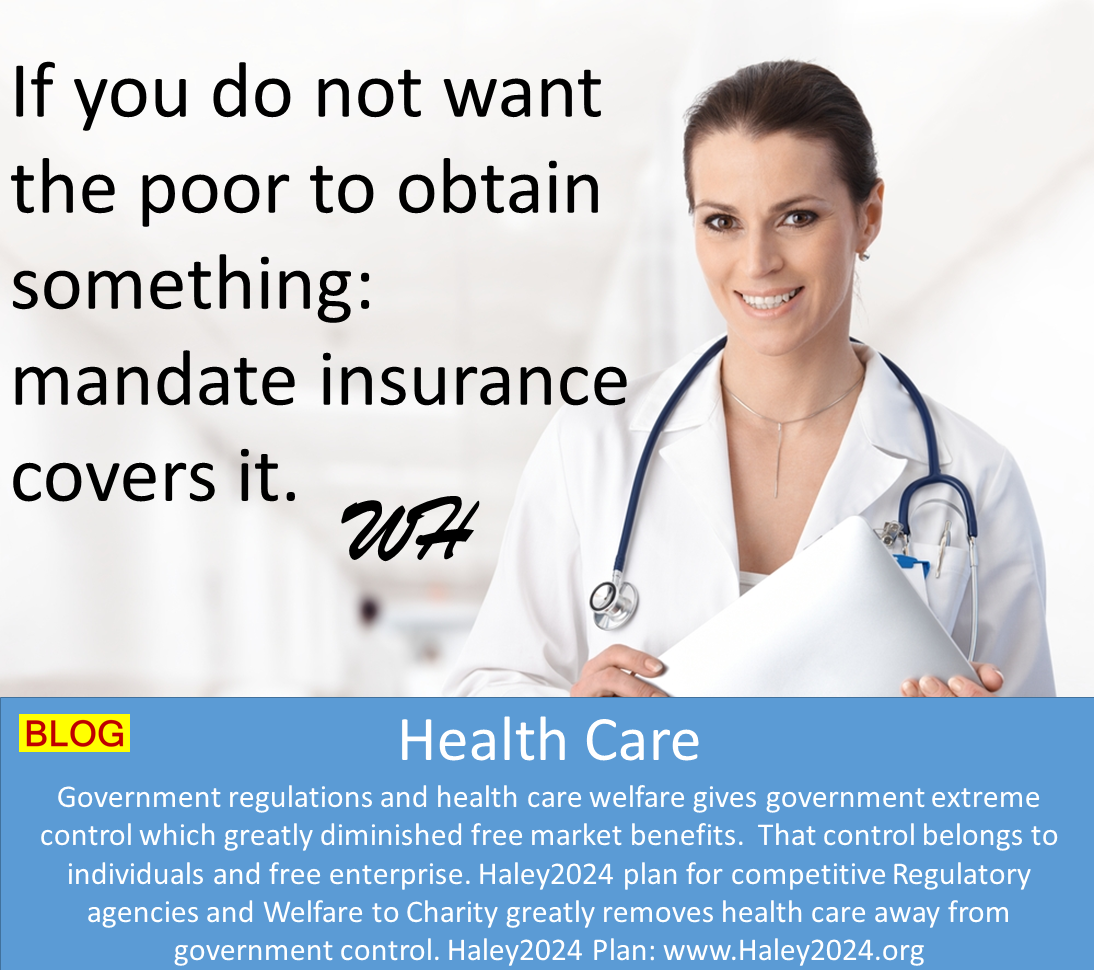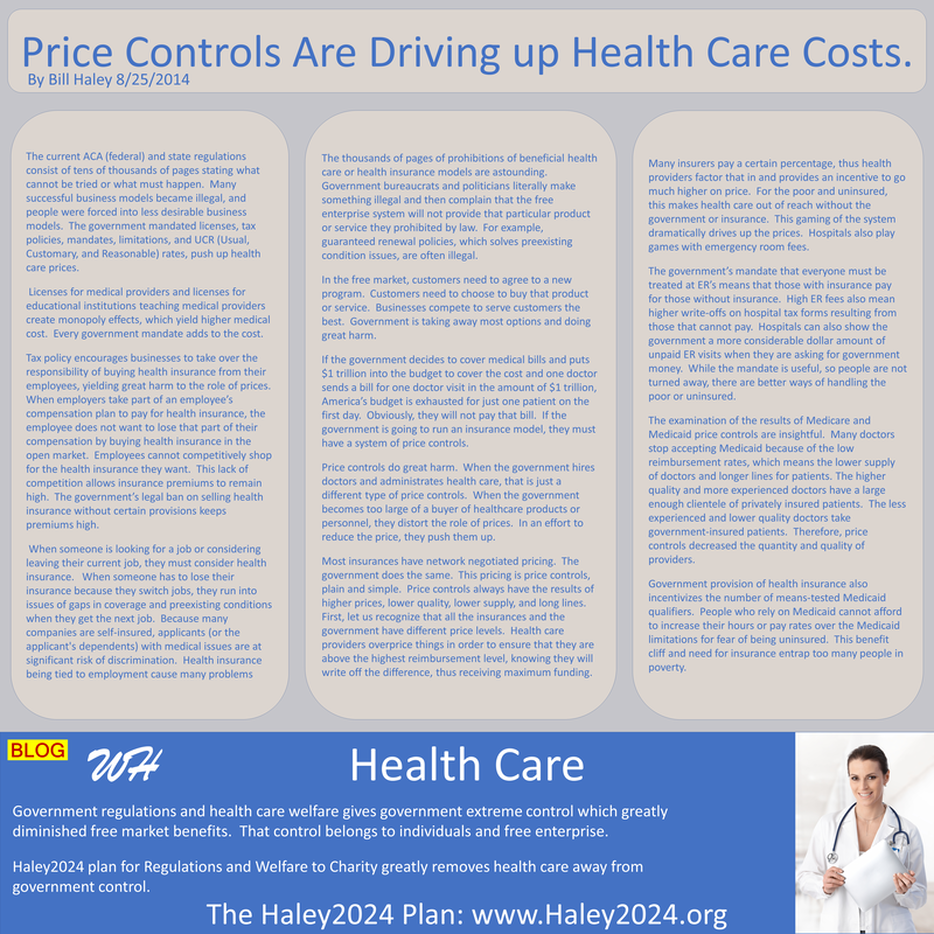| The current ACA (federal) and state regulations consist of tens of thousands of pages stating what cannot be tried or what must happen. Many successful business models became illegal, and people were forced into less desirable business models. The government mandated licenses, tax policies, mandates, limitations, and UCR (Usual, Customary, and Reasonable) rates, push up health care prices. Licenses for medical providers and licenses for educational institutions teaching medical providers create monopoly effects, which yield higher medical cost. Every government mandate adds to the cost. |
| Tax policy encourages businesses to take over the responsibility of buying health insurance from their employees, yielding great harm to the role of prices. When employers take part of an employee’s compensation plan to pay for health insurance, the employee does not want to lose that part of their compensation by buying health insurance in the open market. Employees cannot competitively shop for the health insurance they want. This lack of competition allows insurance premiums to remain high. The government’s legal ban on selling health insurance without certain provisions keeps premiums high. |
| When someone is looking for a job or considering leaving their current job, they must consider health insurance. When someone has to lose their insurance because they switch jobs, they run into issues of gaps in coverage and preexisting conditions when they get the next job. Because many companies are self-insured, applicants (or the applicant's dependents) with medical issues are at significant risk of discrimination. Health insurance being tied to employment cause many problems |
| The thousands of pages of prohibitions of beneficial health care or health insurance models are astounding. Government bureaucrats and politicians literally make something illegal and then complain that the free enterprise system will not provide that particular product or service they prohibited by law. For example, guaranteed renewal policies, which solves preexisting condition issues, are often illegal. In the free market, customers need to agree to a new program. Customers need to choose to buy that product or service. Businesses compete to serve customers the best. Government is taking away most options and doing great harm. |
| If the government decides to cover medical bills and puts $1 trillion into the budget to cover the cost and one doctor sends a bill for one doctor visit in the amount of $1 trillion, America’s budget is exhausted for just one patient on the first day. Obviously, they will not pay that bill. If the government is going to run an insurance model, they must have a system of price controls. Price controls do great harm. When the government hires doctors and administrates health care, that is just a different type of price controls. When the government becomes too large of a buyer of healthcare products or personnel, they distort the role of prices. In an effort to reduce the price, they push them up. |
| Most insurances have network negotiated pricing. The government does the same. This pricing is price controls, plain and simple. Price controls always have the results of higher prices, lower quality, lower supply, and long lines. First, let us recognize that all the insurances and the government have different price levels. Health care providers overprice things in order to ensure that they are above the highest reimbursement level, knowing they will write off the difference, thus receiving maximum funding. |
| Many insurers pay a certain percentage, thus health providers factor that in and provides an incentive to go much higher on price. For the poor and uninsured, this makes health care out of reach without the government or insurance. This gaming of the system dramatically drives up the prices. Hospitals also play games with emergency room fees. The government’s mandate that everyone must be treated at ER’s means that those with insurance pay for those without insurance. High ER fees also mean higher write-offs on hospital tax forms resulting from those that cannot pay. Hospitals can also show the government a more considerable dollar amount of unpaid ER visits when they are asking for government money. While the mandate is useful, so people are not turned away, there are better ways of handling the poor or uninsured. |
| The examination of the results of Medicare and Medicaid price controls are insightful. Many doctors stop accepting Medicaid because of the low reimbursement rates, which means the lower supply of doctors and longer lines for patients. The higher quality and more experienced doctors have a large enough clientele of privately insured patients. The less experienced and lower quality doctors take government-insured patients. Therefore, price controls decreased the quantity and quality of providers. |
| Government provision of health insurance also incentivizes the number of means-tested Medicaid qualifiers. People who rely on Medicaid cannot afford to increase their hours or pay rates over the Medicaid limitations for fear of being uninsured. This benefit cliff and need for insurance entrap too many people in poverty. |
